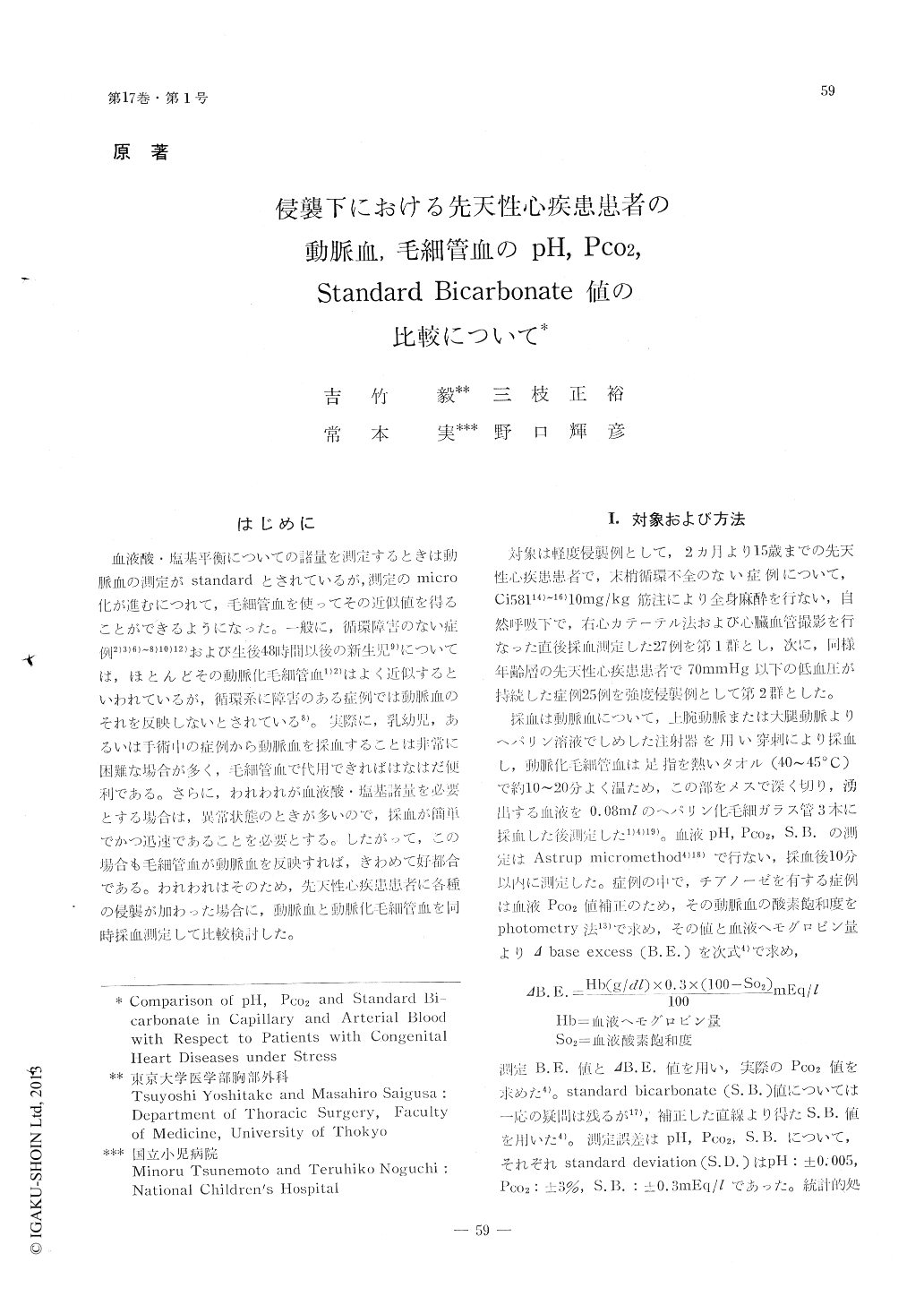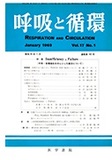Japanese
English
- 有料閲覧
- Abstract 文献概要
- 1ページ目 Look Inside
はじめに
血液酸・塩基平衡についての諸量を測定するときは動脈血の測定がstandardとされているが,測定のmicro化が進むにつれて,毛細管血を使ってその近似値を得ることができるようになった。一般に,循環障害のない症例2)3)6)〜8)10)12)および生後48時間以後の新生児9)については,ほとんどその動脈化毛細管1)2)はよく近似するといわれているが,循環系に障害のある症例では動脈血のそれを反映しないとされている8)。実際に,乳幼児,あるいは手術中の症例から動脈血を採血することは非常に困難な場合が多く,毛細管血で代用できればはなはだ便利である。さらに,われわれが血液酸・塩基諸量を必要とする場合は,異常状態のときが多いので,採血が簡単でかつ迅速であることを必要とする。したがって,この場合も毛細管血が動脈血を反映すれば,きわめて好都合である。われわれはそのため,先天性心疾患患者に各種の侵襲が加わった場合に,動脈血と動脈化毛細管血を同時採血測定して比較検討した。
Capillary blood pH, Pco2 and standard bicarbonate of children with congenital heart diseases were compared to those of artery after cardiac catheterization under narcosis or during hypotension. This study has demonstrated the following conclusion :
In patients without peripheral circulatory insufficiency, arterialised capillary blood is a reliable substitute for arterial blood even under slight surgical intervention. In patients with peripheral circulatory insufficiency, such as hypotension or shock, remarkable discrepancy of pH and Pco2 values was found between capillary and arterial blood, but only values of standard bicarbonate were almost the same between blood from two sources.

Copyright © 1969, Igaku-Shoin Ltd. All rights reserved.


